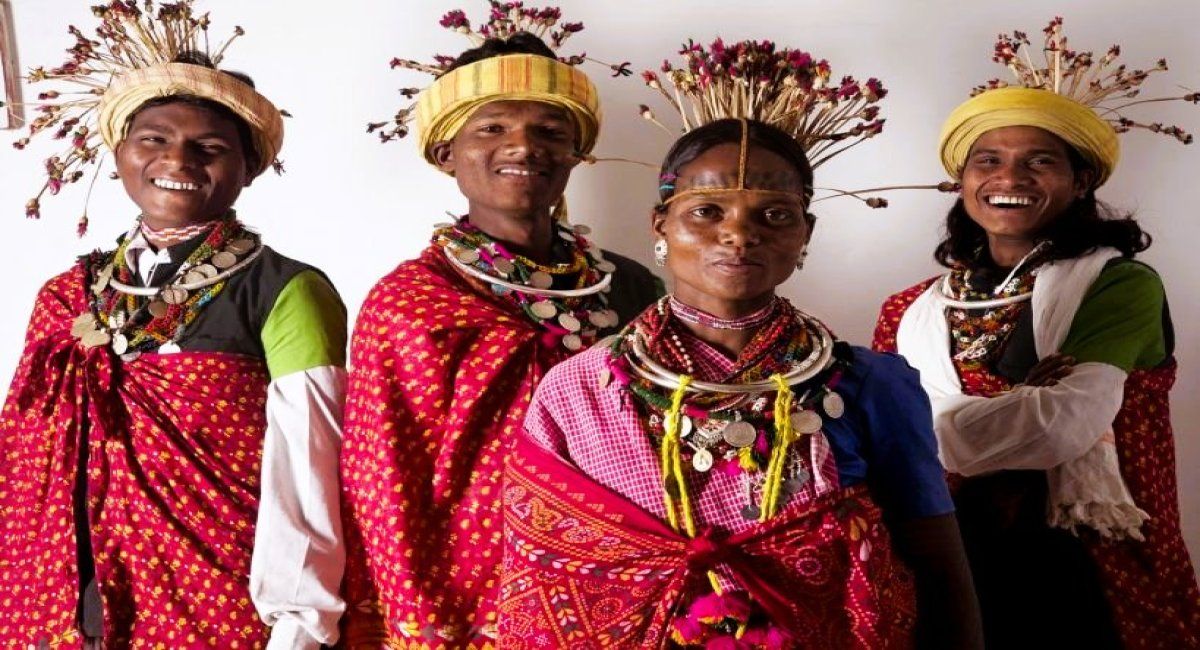
Introduction
Lakshadweep, India’s smallest Union Territory, is a mesmerizing archipelago scattered across the Arabian Sea. Comprising 12 atolls, three coral reefs, and six submerged sandbanks, it spans a modest 32 square kilometers. Despite its size, Lakshadweep is rich in biodiversity, culture, and history. The administrative capital, Kavaratti, serves as the nerve center of this single-district territory.
Of the 27 islands that make up Lakshadweep, only 10 are permanently inhabited: Kavaratti, Agatti, Amini, Kadmat, Kiltan, Chetlat, Bitra, Andrott, Kalpeni, and Minicoy. Each island has its own distinct identity, shaped by centuries of maritime trade, Islamic influence, and tribal traditions. Bitra, the smallest in terms of population, had just 225 residents as per the 1991 Census, while Bangaram, largely uninhabited, recorded a population of 61 during the same period.
Tribes of Lakshadweep
Lakshadweep society is predominantly tribal, with the Indian government recognizing it as a tribal-dominated region. The major tribal communities include the Aminidivi, Koya, Melacheri, and Malmis. These tribes are deeply rooted in Islamic traditions and have preserved their cultural heritage through oral history, craftsmanship, and communal living.
Aminidivi Tribe
The Aminidivi tribe primarily inhabits the northern islands such as Amini, Kiltan, and Chetlat. Historically, they were known for their seafaring skills and played a crucial role in maritime trade between the Malabar Coast and the Arabian Peninsula. Today, the Aminidivis are engaged in coconut farming, fishing, and coir production. Their social structure is tightly knit, with strong emphasis on family and religious values.
Koya Tribe
The Koya tribe is considered the elite among Lakshadweep’s communities. Traditionally landowners and administrators, the Koyas held significant influence in local governance and religious institutions. They are predominantly found in Minicoy and Andrott. The Koyas are known for their literacy, Islamic scholarship, and leadership roles. Their homes are often larger and more ornate, reflecting their historical status.
Melacheri Tribe
The Melacheri tribe, often referred to as the working class of Lakshadweep, are primarily laborers and artisans. They are skilled in coir weaving, boat building, and other crafts essential to island life. Despite their modest economic status, the Melacheri community plays a vital role in sustaining the islands’ traditional industries. Their resilience and craftsmanship are widely respected.
Demography in Lakshadweep
According to the 2011 Census, Lakshadweep had a population of approximately 64,473. The population density is remarkably high due to the limited land area, with most inhabitants concentrated on the 10 inhabited islands. The sex ratio stands at 946 females per 1,000 males, and the literacy rate is an impressive 91.85%, one of the highest among Indian Union Territories.
Islam is the predominant religion, with nearly 97% of the population identifying as Muslim. The tribal communities follow Sunni Islam, and religious practices are deeply intertwined with daily life. Mosques serve not only as places of worship but also as community centers for education and social gatherings.
Languages Spoken by Tribes
The linguistic landscape of Lakshadweep is as diverse as its islands. Malayalam is the most widely spoken language, especially in the northern islands. Jeseri, a dialect of Malayalam with Arabic and Tamil influences, is commonly used in informal settings.
In Minicoy, the southernmost island, the language shifts to Mahl, a dialect of Dhivehi spoken in the Maldives. This linguistic distinction reflects Minicoy’s historical ties with the Maldivian archipelago. English is also taught in schools and used for administrative purposes.
Economy of the Tribes
The economy of Lakshadweep’s tribal communities is largely subsistence-based, relying on natural resources and traditional occupations. While modernization has introduced new avenues, the core economic activities remain rooted in agriculture, fishing, and tourism.
Agriculture
Agriculture in Lakshadweep is constrained by the islands’ sandy soil and limited freshwater. However, coconut cultivation thrives, forming the backbone of the agricultural economy. Coir, derived from coconut husk, is a major product, with tribal artisans weaving mats, ropes, and handicrafts. Other crops include pulses, vegetables, and fruits grown in small home gardens.
Fishing
Fishing is a lifeline for the islanders. The surrounding waters are rich in tuna, mackerel, and other marine species. Traditional fishing methods, such as pole-and-line fishing, are still practiced. The tribes have a deep understanding of the sea, passed down through generations. Fish is not only a dietary staple but also a source of income through local and export markets.
Tourism
Tourism is a growing sector, offering economic opportunities while posing challenges to cultural preservation. Islands like Agatti and Bangaram attract visitors with their pristine beaches and coral reefs. Tribal communities participate in eco-tourism initiatives, providing homestays, guiding services, and cultural performances. However, tourism is regulated to protect the fragile ecosystem and maintain the islands’ tranquility.
Society and Culture
Lakshadweep tribal society is communal and egalitarian. Social norms are guided by Islamic principles, with strong emphasis on hospitality, modesty, and mutual respect. Festivals such as Eid are celebrated with fervour, featuring communal prayers, feasts, and traditional music.
Craftsmanship is a cultural hallmark. From coir products to boat-making, tribal artisans exhibit remarkable skill. Dance forms like Lava, performed during weddings and festivals, showcase the islands’ rich oral traditions.
Marriage customs are elaborate, often involving extended families and community participation. Women play a central role in household management and cultural preservation, although public leadership is traditionally male-dominated.
Conclusion
The tribes of Lakshadweep are the soul of this island paradise. Their resilience, traditions, and harmonious relationship with nature offer valuable lessons in sustainable living and cultural preservation. As Lakshadweep navigates the tides of modernization, its tribal communities remain steadfast stewards of a unique heritage one shaped by the sea, sanctified by faith, and sustained by community.